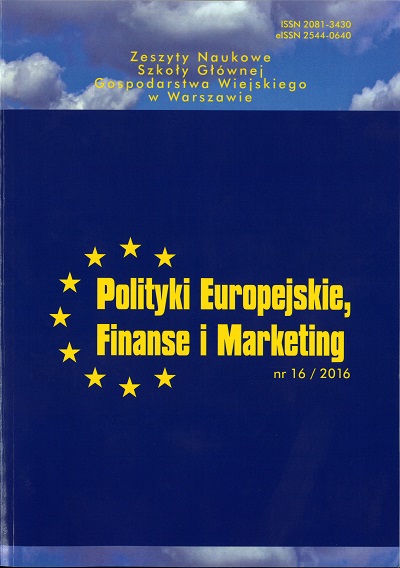Main Article Content
Article Details
Bakhtin, M.: The dialogic imagination: four essays by M. M. Bakhtin (C. Emerson & M. Holquist, Trans.).: University of Texas Press., Austin, Texas 1981;
Blank, M., & Franklin, E.: Dialogue with preschoolers: A cognitively-based system of assessment. Applied Psycholinguistics, 1(02)/2008.
Bohm, D.: Unfolding meaning: A weekend of dialogue with David Bohm., NY: Routledge New York 1985.
Bokeno, M.: Dialogue at work? What it is and isn't. Development and Learning in Organizations, 21(1)/2007. (Crossref)
Bortree, & Seltzer: Dialogic strategies and outcomes: an analysis of environmental advocacy groups' Facebook profiles. Public Relations Review, 35/2009. (Crossref)
Buber, M: I and Thou: Continuum Publishing Group Inc., 2004.
Cutlip, S. M., Center, A. H., & Broom, G. M. (2006). Effective public relations (9th ed.). Upper Saddle River, N.J.: Prentice Hall.
DiNardo, A. M.: The Internet as a crisis management tool: A critique of banking sites during Y2K. Public Relations Review, 28/2002. (Crossref)
Esrock, S. L., & Leichty, G. B.: Organization of corporate Web pages: Publics and functions. Public Relations Review, 26/2000. (Crossref)
Gadamer, H.-G.: Dialogue and dialectic: eight hermeneutical studies on Plato (P. C. Smith, Trans.)., CT: Yale University Press, New Haven 1980a.
Gordon J., Berhof S.: University websites and dialogic features for building relationships with potential students, Public Relations Review, 35/2009. (Crossref)
Greer, C. F., & Moreland, K. D.: United Airlines' and American Airlines' online crisis communication following the September 11 terrorist attacks. Public Relations Review, 29/2003. (Crossref)
Grönroos, C.: The relationship marketing process: communication, interaction, dialogue, value. The Journal of Business and Industrial Marketing, 19(2)/2004. (Crossref)
Grunig, J. E.: Organizations, environments and models. Public Relations Research and Education, 1(1)/1984.
Gustafson, R. L., & Thomsen, S. R.: Merging the teaching of public relations and advertising onto the information superhighway. Public Relations Quarterly, 41(1)/1996.
Herzberg B. & Wright, A.: The public-private dialogue handbook: a toolkit for business [sic] environment reformers, 2006, Retrieved from http://www.publicprivatedialogue.org/tools/PPDhandbookC7.pdf
Hinson, R.E., van Zyl H., Agbleze S.,: An interrogation of the dialogic potential of insurance firm websites in Ghana, Information Development 1-11/2013. (Crossref)
Ingenhoff, D., & Koelling, A. M.: The potential of Web sites as a relationship building tool for charitable fundraising NPOs. Public Relations Review 35/2009. (Crossref)
Kang S., Norton H. E.: Nonprofit organizations' use of the World Wide Web: are they sufficiently fulfilling organizational goals? Public Relations Review 30/2004. (Crossref)
Kent, M. L., & Taylor, M.: Building dialogic relationships through the World Wide Web. Public Relations Review 24(3)/1998. (Crossref)
Kent, M. L., Taylor, M., & White, W.: The relationship between Web site design and organizational responsiveness to stakeholders. Public Relations Review 29(1)/2003. (Crossref)
Lord, S. A.: Meditative dialogue: A tool for engaging students in collaborative learning processes. Journal of Family Therapy 29(4)/2007. (Crossref)
Lovejoy K., Saxton G.D.: Information, Community, and Action: How Nonprofit Organizations Use Social Media, Journal of Computer-Mediated Communication Vol. 17/2012. (Crossref)
Lovejoy K., Waters R. D., Saxton G. D.: Engaging stakeholders through Twitter: How non-profit organizations are getting more out of 140 characters or less, Public Relations Review vol. 38(2)/2012. (Crossref)
McAllister, S., & Taylor, M.: Community college Web sites as tools for fostering dialogue. Public Relations Review 33/2007. (Crossref)
Morrell, K.: Socratic dialogue as a tool for teaching business ethics. Journal of Business Ethics 53(4)/2004. (Crossref)
Naudé, A. M. E., Froneman, J. D., & Atwood, R. A.: The use of the Internet by ten South African non-governmental organizations-a public relations perspective, Public Relations Review 30/2004. (Crossref)
Park H., Reber B.H.: Relationship building and the use of Web sites: How Fortune 500 corporations use their Web sites to build relationships, Public Relations Review 34/2008. (Crossref)
Pieczka, M: Public relations as dialogic expertise? Journal of Communication Management 15(2)/2011. (Crossref)
Podnar, K., & Golob, U.: Reconstruction of public relations history through publications in Public Opinion Quarterly. Management 13(1)/2009. (Crossref)
Post, J. E., Preston, L. E., & Sauter-Sachs, S.: Redefining the corporation: Stakeholder management and organizational wealth., CA: Stanford University Press, Stanford 2002. (Crossref)
Rogers, C. R.: On becoming a person : a therapist's view of psychotherapy.: Constable & Company, London 1961.
Rybalko S., Seltzer T.: Dialogic communication in 140 characters or less: How Fortune 500 companies engage stakeholders using Twitter, Public Relations Review Vol. 36 (4)/2010. (Crossref)
Taylor, M., Kent, M. L., & White, W. J.: How activist organizations are using the Internet to build relationships, Public Relations Review,27(3)/2001. (Crossref)
Theunissen P., Wan Noordin W.: Revisiting the concept "dialogue" in public relations, Public Relations Review, 38/2012. (Crossref)
Ustawy z 24 kwietnia 2003 o działalności pożytku publicznego i o wolontariacie (Dz. U. z 2014 r., poz. 1118),
Van der Merwe, R., Pitt, L., & Abratt, R.: Stakeholder strength: PR survival strategies in the Internet age. Public Relations Quarterly 50(1)/2005.
Downloads
- Maciej Stawicki, Rozwój bazy hotelowej w Polsce przy wykorzystaniu funduszy europejskich , Zeszyty Naukowe SGGW, Polityki Europejskie, Finanse i Marketing: Nr 16(65) (2016)
Możesz również Rozpocznij zaawansowane wyszukiwanie podobieństw dla tego artykułu.
- Adam Pawlewicz, Piotr Szamrowski, Znaczenie blogów firmowych w komunikacji między przedsiębiorstwem a klientem , Zeszyty Naukowe SGGW, Polityki Europejskie, Finanse i Marketing: Nr 9(58) (2013)
- Marian Oliński, Piotr Szamrowski, Wykorzystanie Twittera w działalności organizacji pożytku publicznego , Zeszyty Naukowe SGGW, Polityki Europejskie, Finanse i Marketing: Nr 19(68) (2018)





